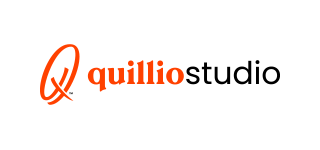How to Choose the Right Social Media Platforms for Your Audience
Close-up of a hand interacting with a smartphone, surrounded by floating social media icons such as a heart, like button, and chat bubble. Represents social engagement and choosing the right digital platforms for audience connection.
Go where your people are—not where everyone else is.
When it comes to social media, it’s easy to fall into the trap of “being everywhere.” But truth is, you don’t need to be on every platform—you just need to be where your audience actually hangs out.
Whether you're a small business, a new brand, or building your online presence from scratch, this guide will help you choose the right platforms that align with your goals and your people.
Step 1: Know Your Audience
Before you choose a platform, get clear on who you're trying to reach. Ask yourself:
How old are they?
Where do they live?
What are they into?
How do they prefer to shop or discover brands?
Are they looking to be entertained, educated, or inspired?
🎯 The clearer your audience is, the easier it is to pick a platform that fits their vibe.
Step 2: Understand What Each Platform Does Best
Each platform has its own personality—and strength. Here's a quick breakdown:
Best for: Visual brands, lifestyle, beauty, fashion, food, fitness
Use it if: You have strong visuals and want to build community through Reels, Stories, and shopping features.
TikTok
Best for: Short-form video, Gen Z, virality, humor, education
Use it if: You’re comfortable on camera, want to go viral, or have a niche with strong storytelling potential.
Best for: Community building, older audiences (30+), local marketing
Use it if: You run local events, rely on word-of-mouth, or want to create a group experience.
Best for: Planning, visual discovery, DIY, weddings, home, wellness
Use it if: You’re in e-commerce, blog-heavy, or your product thrives on mood boards.
Best for: B2B, thought leadership, professionals
Use it if: You’re a service provider, coach, or brand that sells to other businesses.
YouTube
Best for: Long-form content, education, tutorials, storytelling
Use it if: You can commit to a content schedule and want to build evergreen SEO traffic.
X (Twitter)
Best for: News, updates, tech, and fast-paced commentary
Use it if: Your brand is thought-driven, real-time, or rooted in conversation.
Step 3: Align with Your Strengths
Not every platform will match your skillset—and that’s okay.
If you love writing → try LinkedIn, X, or Threads
If you love video → TikTok or Instagram Reels
If you love design → Pinterest or Instagram
If you love educating → YouTube or carousel posts
If you love quick updates → Facebook or X
Choose 1-2 platforms where you can show up consistently and confidently.
Step 4: Consider Your Goals
Different platforms support different outcomes. Ask yourself:
Do I want to drive website traffic? → Pinterest, YouTube, LinkedIn
Do I want to build community? → Instagram, Facebook Groups
Do I want to increase brand awareness? → TikTok, Instagram Reels
Do I want to generate leads or sales? → Facebook Ads, Instagram Shop, Pinterest
Start with your goal and reverse-engineer the best place to spend your time.
Step 5: Test and Adjust
You don’t have to pick the “perfect” platform right away. Start small:
Choose one primary and one secondary platform
Post consistently for 4–6 weeks
Check your analytics: what’s working, what’s not?
Double down on the platform that brings results
Let the data guide your strategy—not just the trends.
Final Thoughts
You don’t need to be everywhere—you just need to be where it matters. By choosing the right platforms, you’ll save time, show up with more clarity, and actually connect with the people who want what you offer.
Start with one, do it well, and grow from there.


